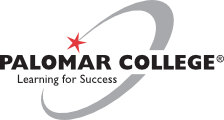
Course Outline
CSIT 150 - Introduction to SQL
Fall Semester 2016
Basic Course Information
Courses numbered 1 - 49 are remedial or college preparatory courses which do not apply toward an A. A. Degree and are not intended for transfer. Courses numbered 50-99 apply toward an AA Degree, but are not intended for transfer. Courses numbered 100 and higher apply toward an AA Degree and/or are intended for transfer to a four-year college or university.
D - Credit - Degree Applicable
CSIT
Introduction to SQL
Units and Hours
3
3
Grade/Pass/No Pass
| Hour Type | Units | Weekly Hours | Semester Hours x 16 Weeks | Semester Hours x 18 Weeks |
|---|---|---|---|---|
| Lecture Category - | 2.50 | 2.50 | x 16 Weeks - 40.00 | x 18 Weeks - 45.00 |
| Lab Category - | 0.50 | 1.50 | x 16 Weeks - 24.00 | x 18 Weeks - 27.00 |
| Subtotal - | 4.00 | x 16 Weeks - 64.00 | x 18 Weeks - 72.00 | |
| Out of Class Hour - | 5.00 | x 16 Weeks - 80.00 | x 18 Weeks - 90.00 | |
| Totals - | 9.00 | x 16 Weeks - 144.00 | x 18 Weeks - 162.00 |
| Hour Type | Units | Weekly Hours | Semester Hours x 16 Weeks | Semester Hours x 18 Weeks |
|---|---|---|---|---|
| Lecture Category - | 2.50 | 2.50 | x 16 Weeks - 40.00 | x 18 Weeks - 45.00 |
| Lab Category - | 0.50 | 1.50 | x 16 Weeks - 24.00 | x 18 Weeks - 27.00 |
| Subtotal - | 4.00 | x 16 Weeks - 64.00 | x 18 Weeks - 72.00 | |
| Out of Class Hour - | 5.00 | x 16 Weeks - 80.00 | x 18 Weeks - 90.00 | |
| Totals - | 9.00 | x 16 Weeks - 144.00 | x 18 Weeks - 162.00 |
Catalog Description
Intended for individuals who want to learn how to search for and manipulate data in a database, create tables and indexes, handle security, control transaction processing, and learn the basics of how to design a database.
Student Learning Outcomes
Outcome
Demonstrate Industry-accepted coding standards.
Students will be able to use and test SQL statements that manipulate information, create database objects, and construct correct data integrity and security controls for a relational database according specified criteria.
Specific Course Objectives
Objective
Upon successful completion of the course, the student will be able to:
- Identify the features of SQL.
- Query a database using SQL.
- Utilize sub-queries in the database.
- Modify data in a database using SQL.
- Ensure database integrity
Methods of Instruction
Methods of Instruction may include, but are not limited to, the following:
Lab
Lecture
Content in Terms of Specific Body of Knowledge
- Introduction
- SQL basics
- Relational Databases
- Database Design Fundamentals
- Creating Tables and Indexes
- Selecting Data
- The Select List
- Specifying Tables
- Selection Criteria
- Sorting Data and Functions
- The Order By Clause
- Distinct Selects
- Aggregate Functions
- Grouping Data
- The Group By Clause
- Having Criteria
- Joining Data
- Inner Joins
- Outer Joins
- Set Functions
- Using Subqueries
- Joins vs. Subqueries
- Subquery Rules
- Multiple Nesting
- Adding and Changing Data
- Insert Statement
- Update Statement
- Delete Statement
- Views and Misc. topics
- Creating Views
- Managing Database Security
- Transaction Management
- Triggers and Stored Procedures
- Performance Issues
- Database Integrity
Textbooks/Resources
Textbook
Murach, Joel
Murach's MySQL, 2nd Edition
2nd
Fresno
Murach
2015
Assignments
Students will be required to read chapters in the class text.
Students will discuss (in writing) useful methods of troubleshooting SQL statements
It is the intention of the Database program to teach its students to think critically. Every database course requires students to clarify their thoughts sufficiently so that those thoughts can be expressed in a form that a computer can carry them out. The various CSDB courses focus on different areas of critical thinking, but each has as its primary objective to teach students to think critically in that area.
Designing a database for a computer to perform complex operations is probably more demanding of critical thinking skills than almost any other activity. First, before one can write a database system to do something, one must understand what the program is supposed to accomplish. Since the intended objectives of a software system are described in English (at best), significant critical thinking skills are required simply to understand what is to be done. Second, students must determine, in precise detail, how the objectives may be accomplished. Finally, students must express the required steps as a database system. A computer program is a text in an unforgiving language, a programming language. Programming languages are interpreted more formally and literally than virtually any other language in existence. Syntax and semantics are rigidly defined. Everything must be correct for the program to operate properly. Accomplishing these steps successfully requires well honed and sophisticated critical thinking skills, skills that students are forced to develop through their studies in database systems.
There are written homework exercises within each section of each chapter which are assigned, requiring an average of one hour to complete. In addition, numerous computer lab exercises are assigned, each ranging from one to ten hours to complete by an average student.
Methods of Assessment
Evaluation Method
- Homework
- Exams/Tests
Open Entry/Open Exit
- Not Open Entry/Open Exit
Repeatability
No
Contact Person
Canon, Terrie Lynn